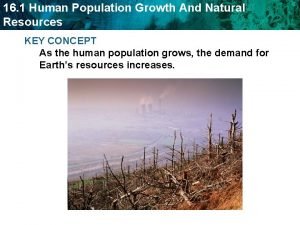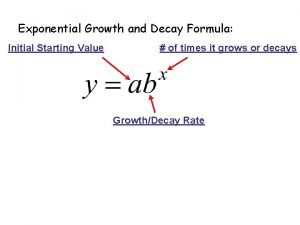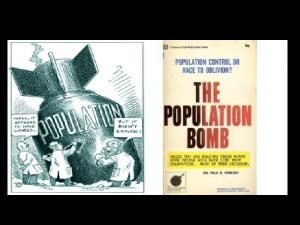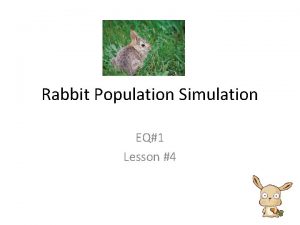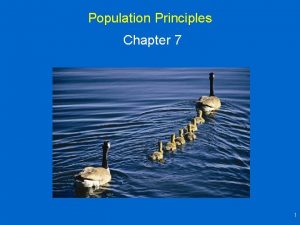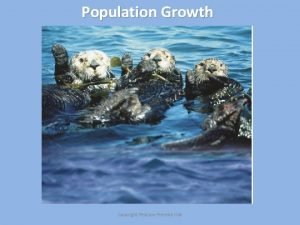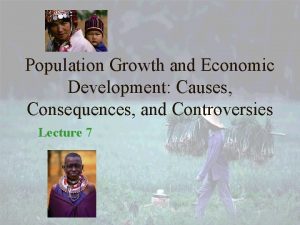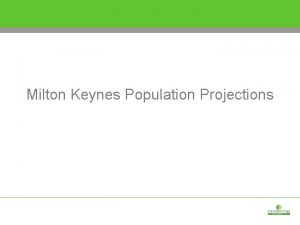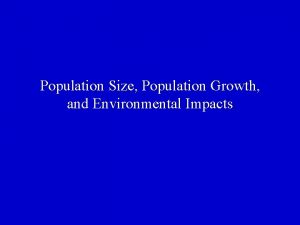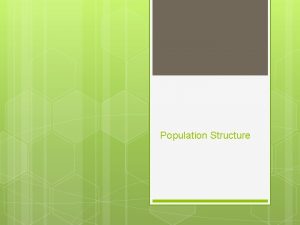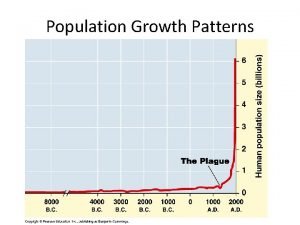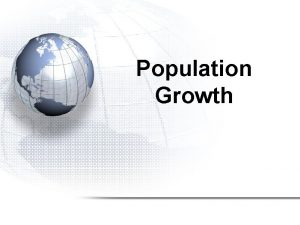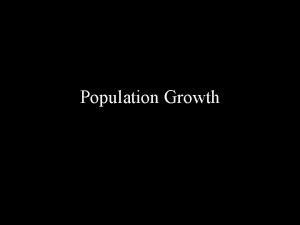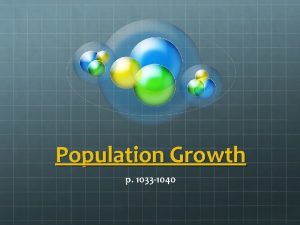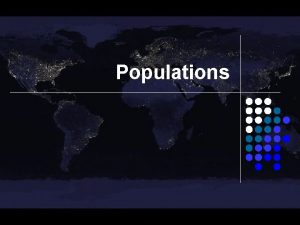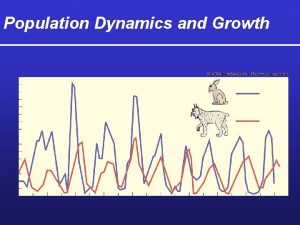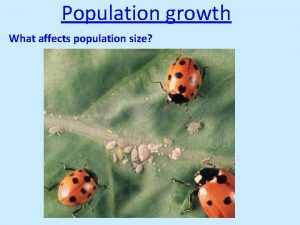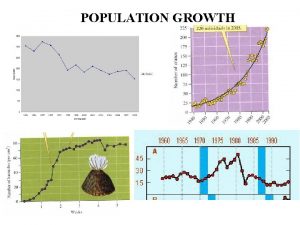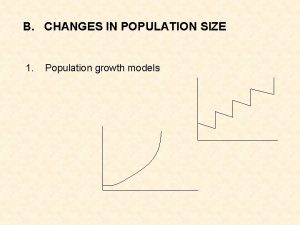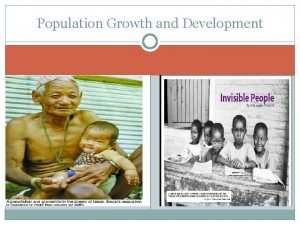Population size and structure Population growth in MEDNs


















- Slides: 18

Population size and structure

Population growth in MEDNs and LEDNs Less economically developed nations More economically developed nations

Prospects for growth in world population

Manipulating population data

1. Use the table below to calculate the RNI for the UK and Hong Kong 2. Which would have the shortest doubling time 3. Explain why RNI figures may be an inaccurate measure of the growth rate for a population Population data for the UK and Hong Kong, 1999 Country UK Hong Kong Total population Births (per 1000 per year) Deaths (per 1000 per year) 59. 4 million 12 10 6. 9 million 9 5

Use the table below to calculate the RNI for the UK and Hong Kong • Births – deaths = increase • RNI UK • = 0. 2% increase 12 – 10 = 2 per 1000 • RNI Hong Kong • = 0. 4% increase 9 – 5 = 4 per 1000

Which would have the shortest doubling time? • Hong Kong because it has a higher RNI

Explain why RNI figures may be an inaccurate measure of the growth rate for a population RNI figures do not allow for: • • Immigration Emigration Sudden changes in birth rate Sudden changes in death rate

Survival curves for MEDNs and LEDNs Calculate average life expectancy (MEDN and LEDN) from the graph LEDN = 54 years MEDN = 74 years

Structure of MEDN and LEDN populations

Past, present and future population trends • The average world rate of population growth is 1. 4% • However, there is great variation from country to country

Growth rate and doubling time Location Growth rate (% Yr-1) Doubling time (Yr) World 1. 4 49 Central and South America 1. 8 38 Africa 2. 5 28 Asia 1. 5 46 Northern Europe 0. 1 541 Australia 0. 7 107 North America 0. 6 119 Describe the relationship between growth rate and doubling time. As the growth rate increases, doubling time decreases

Demographic transition model

Demographic pyramids for the demographic transition model Stage 3 Stage 2 Stage 4 Stage 1

Student exercise 1) Describe the changes in birth rate and death rate and population growth in Sweden and Sri Lanka since 1900 2) In which stage of the demographic transition model was each country in the year 2000?

1) Describe the changes in birth rate and death rate and population growth in Sweden and Sri Lanka since 1900 • Sweden: the general trend is a decline in both birth rate and death rate since 1900 • Sri Lanka: 1900 -30, birth rate increased, 193060 birth rate fluctuated, 1960 onward birth rate has declined. The death rate increased to 1920 and has generally declined since. • Birth rates exceed death rates in Sri Lanka, so its population continues to grow rapidly. In Sweden, death rates have exceeded birth rates since about 1995, so the total population is decreasing.

2) In which stage of the demographic transition model was each country in the year 2000? • Sweden is in stage 4 of the demographic transition model, entering stage 5 • Sri Lanka is in stage 3

Social conditions affecting population structure • Food supply • Sewage disposal • Drinking water supply
 Absolute growth rate and relative growth rate
Absolute growth rate and relative growth rate Shoot system
Shoot system Primary growth and secondary growth in plants
Primary growth and secondary growth in plants Primary growth and secondary growth in plants
Primary growth and secondary growth in plants Natural resources and population growth
Natural resources and population growth Exponential growth function formula
Exponential growth function formula Step growth polymerization vs chain growth
Step growth polymerization vs chain growth Geometric exponential growth
Geometric exponential growth Neoclassical growth theory vs. endogenous growth theory
Neoclassical growth theory vs. endogenous growth theory Difference between organic and inorganic growth
Difference between organic and inorganic growth Rule of 70
Rule of 70 What are the two types of population growth
What are the two types of population growth Modeling population growth rabbits answer key
Modeling population growth rabbits answer key Survivorship curve
Survivorship curve Copyright
Copyright Why population growth is good
Why population growth is good What is population ecology
What is population ecology Exponential population growth
Exponential population growth Milton keynes population
Milton keynes population




